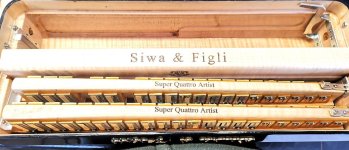The Sonola SS6 is in a class by itself
I switched out piccolo reed for another Clarinet so the violin is beautiful
I don’t know if Scandalli intense air sounds as good
I have double riveted binci reeds in new clarinet reeds
I consider weight now that I am older Scandalli Air III-at 21 lbs but key size smaller so I am playing two different key sizes
Hard decision
I switched out piccolo reed for another Clarinet so the violin is beautiful
I don’t know if Scandalli intense air sounds as good
I have double riveted binci reeds in new clarinet reeds
I consider weight now that I am older Scandalli Air III-at 21 lbs but key size smaller so I am playing two different key sizes
Hard decision



